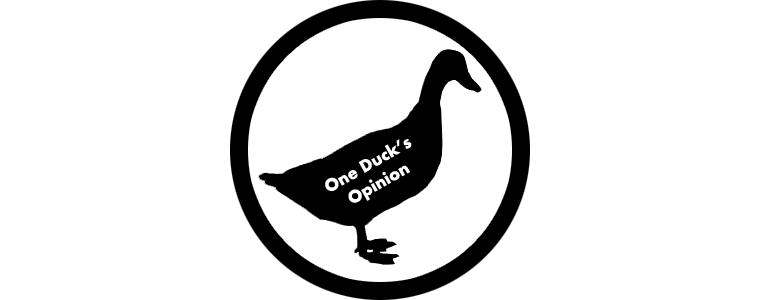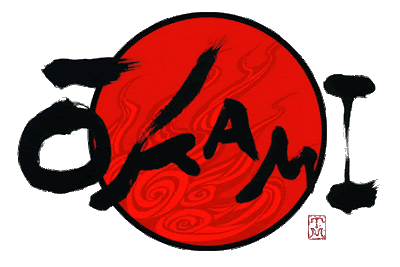 Remakes can be wonderful things
Remakes can be wonderful things. Enhanced re-releases of classic titles allow new generations of gamers to enjoy the classic games of the past. They also allow veteran gamers to see their old favorites in a new light. Of course, in order to be called a remake, a game must be different from it's original version. Otherwise, it's merely a port. But how much can be changed while still preserving the original product? Here are a few remakes I've played over the years.
Let's see which ones served as loyal recreations and which ones went over the line.First, let's take a look at the game pictured above:
Super Mario Advance 4: Super Mario Bros. 3. As is evident from the title, this is a remake of Super Mario Bros. 3 for the NES. Was it a faithful remake, or an insult to a classic?
First, let's look at
the content. Every single world, level and power-up from the original game has been preserved. From World 1 to World 8, everything is exactly the way it was back in 1990. Purists need not worry here!
In addition to all the original content, several new aspects were added into the mix. First of all,
the original Mario Bros. was added. Not Super Mario Bros., but the original Mario Bros. arcade game, where players could compete to defeat each other, or work together to annihilate the Spinies, crabs and Buzzy Beetles running throughout the level. In Super Mario Advance 4, link cable support was added so two players on two separate Game Boy Advances could play together.
 The original Mario Bros. returns in Super Mario Advance 4
The original Mario Bros. returns in Super Mario Advance 4Also added to the mix was support for the new
e-Reader peripheral. Players could now unlock new levels within the game by swiping cards through the scanner. Although use of the e-Reader was clunky and the peripheral short-lived, it was still a great addition to the series.
So in the end, Super Mario Advance 4: Super Mario Bros. 3 was
a faithful recreation of the classic NES title. Everything was retained from the original version, and the added features made the overall package even better. And to top it all off,
the entire game was reproduced in glorious 32-bit graphics. This is a great example of how to properly pull off a remake.

Few game series are more popular or well known than Pokemon. The massive RPG franchise has been draining wallets and stealing time ever since 1995, and in 2004 it received it's first remakes in the form of
Pokemon Firered and Pokemon Leafgreen (Pictured). These two games are remakes of the original two Pokemon games, Red and Blue (Pocket Monsters Aka and Pocket Monsters Midori in Japan).
As was the case with Super Mario Advance 4,
Pokemon Leafgreen and Firered retain all original aspects of the source material. Every trainer, city, character and gym are presented exactly as they were over a decade ago.
There is a slight change from the American version of the original trilogy, as the Unknown Dungeon replicates the layout from Aka and Midori. The cave had been altered for Pokemon Ao, a game similar to Aka and Midori, except for updated graphics, relocated Pokemon, and the aforementioned change to the Unknown Dungeon. The Ao version of the cave was used in Red, Blue and Yellow.
In addition to all the original content, several features such as
new islands and areas were added. After defeating Blaine at the Cinnabar gym, players are able to venture to the new Sevii Islands. These islands feature mini-games, additional Team Rocket hide-outs, a Battle Tower and several new Pokemon from the later versions of the series.
 A map of the Sevii Islands
A map of the Sevii IslandsSomething that really bugged me about Pokemon Firered and Leafgreen was how incredibly
newbie-friendly it was. All throughout the game it holds you hand, giving you far more tips and pointers than before. Every time the game is started up, it shows you the last few things you did, just in case you forgot. This would be nice, except it shows you mundane things such as "Left Rock Tunnel", "Bought Pokeballs" and "Healed Pokemon". Also, your hand is held somewhat further into the game than before.
The game had been compromised to appeal to a wider audience, which sadly repelled me.As expected, the entire game has been revamped to take advantage of the Game Boy Advance's significant increase in horsepower over the original Game Boy.
Better graphics and sound are welcome additions.When it comes to remakes,
Firered and Leafgreen are somewhat decent. The dumbed-down nature of it really gets on my nerves, though. Personally, it's my least favorite game of the main series. Still, it's pretty fun.
Just don't hold it to as high a standard as the original games.
Resident Evil is really the big name when it comes to horror videogames. It all started back on the Playstation in 1996.
Resident Evil: Deadly Silence is a remake of that ground-breaking title.
Released in 2005,
Deadly Silence includes every single aspect of the original Resident Evil in a near-untouched state. A few minor changes include slightly updated graphics, the addition of a knife button (L trigger), the 180 degree quick-turn, a constant map (On the top screen) and real-time reloading. A few of the more intense scenes had been cut, such as footage of half-eaten corpses and Joseph being mauled by a dog. However, this was true of all later releases of Resident Evil, so it's
no big deal.In addition to "Classic" mode,
Deadly Silence also included a "Rebirth" mode. Rebirth followed the same general storyline as the original game, but also added in slight narrative variations and, most notably, additional gameplay sequences using the DS' unique abilities. For example, at one point you'll have to administer mouth-to-mouth resuscitation by blowing into the microphone. Also added was a random
first-person knife-wielding sequence. Occasionally when opening doors, the camera will switch to a first-person view, and enemies will begin walking straight towards you. Your only means of defense is to tap and slash with the stylus to attack the monsters with your knife.
 The first-person knife-fighting sequences are sure
The first-person knife-fighting sequences are sure
to keep players on their toes., but still stuck to the same basic strategies and storyline. I felt it incredibly welcome to be able to play an old game in a new way.
Instead of being a purely single-player affair, Resident Evil: Deadly Silence also adds
multiplayer to the mix. There's a co-operative mode, in which all players must work together in order to escape the mansion alive. There's also a competitive mode, in which the players fight to get the most points by killing the most monsters. The big downside? No single-card download play...
Also left intact is the game's infamous
B-movie grade voice acting. "You were almost a Jill Sandwich!" "Just a moment!" "It's not just a poisonous snake, it's a MONSTER!" Every last terrible bit of it is back!
Resident Evil: Deadly Silence is an
incredibly faithful remake of an amazing horror title. From the cheesy dialog to the head-scratching puzzles, it's all there, as well as several additions to help spice things up.
Deadly Silence, like Super Mario Advance 4, is a great example of how to do a remake right. Super Mario 64 was the flagship title for the Nintendo 64 back in 1996
Super Mario 64 was the flagship title for the Nintendo 64 back in 1996. It was a major departure for the series, as it was the first to ever take Mario into the realm of 3D. It pulled off this feat amazingly, and has gone on to be considered one of the greatest videogames ever created. In 2004,
Super Mario 64 DS was released alongside the brand-new Nintendo DS.
Unlike any other game in this article,
64 DS drastically deviates from the source material. Instead of being able to play as Mario throughout the entire game, players first start off playing as Yoshi. Even once Mario is unlocked, he cannot access all the abilities he had in the original game. He cannot become Metal Mario or Invisible Mario. He can, however, become Flying Mario. Added to 64 DS was the ability for Mario to inflate himself and float, similar to his aerial abilities in Super Mario World.
All other abilities were instead available only to the other characters. Luigi gained the ability to become invisible, and Wario can now turn into metal. Yoshi gains an all-new ability: Breathing fire. Yoshi also has one other unique skill, and that's
the ability to turn into any one of the other three characters. By picking up hats scattered throughout the levels, Yoshi can take on the abilities and appearance of Mario, Luigi or Wario. Beyond this, Yoshi can then gain the ability to fly, float, become metal or become invisible. However, getting hurt while taking on the form of another character will knock the hat off of him and return him to his regular state.
 All the added characters only seemed to complicate the experience.
All the added characters only seemed to complicate the experience.In addition to the added characters and changes to abilities,
several levels have been altered to a degree. In some cases enemies have been added or removed, and sometimes there may be an additional platform here and there.
Beyond the core game,
mini-games have been added. At first only eight mini-games are available, but players can unlock more by locating and capturing bunnies scattered throughout the main game.
Also added is a
multiplayer mode. Up to four players can compete to gather the most stars by the time runs out. Players can attack their foes to knock the stars out of their grasp. Everybody starts off as a Yoshi, but finding hats scattered about can turn them into the other three characters, just like in the main game.
The original audio is all retained from the original game, as well as new sound effects and voice acting for new characters. The graphics are slightly enhanced from the Nintendo 64 version.
In the end,
I feel that Super Mario 64 DS is a pretty crappy remake. Far too much was changed in my opinion. Characters were added, stages were changed, entire levels were added and some boss battles were altered.
As a standalone title, it's pretty good. As a remake, however, it's atrocious.Remakes are great. They help keep the classics alive. However, just because it's a classic doesn't mean it'll be great as a remake. If too much is changed, added, or taken away, the game becomes too far separated from it's source material. Super Mario 64 is a great example of what not to do when creating a remake.
I hope more developers take a Super Mario Advance 4 approach to remakes in the future.The Duck Has Spoken.












































